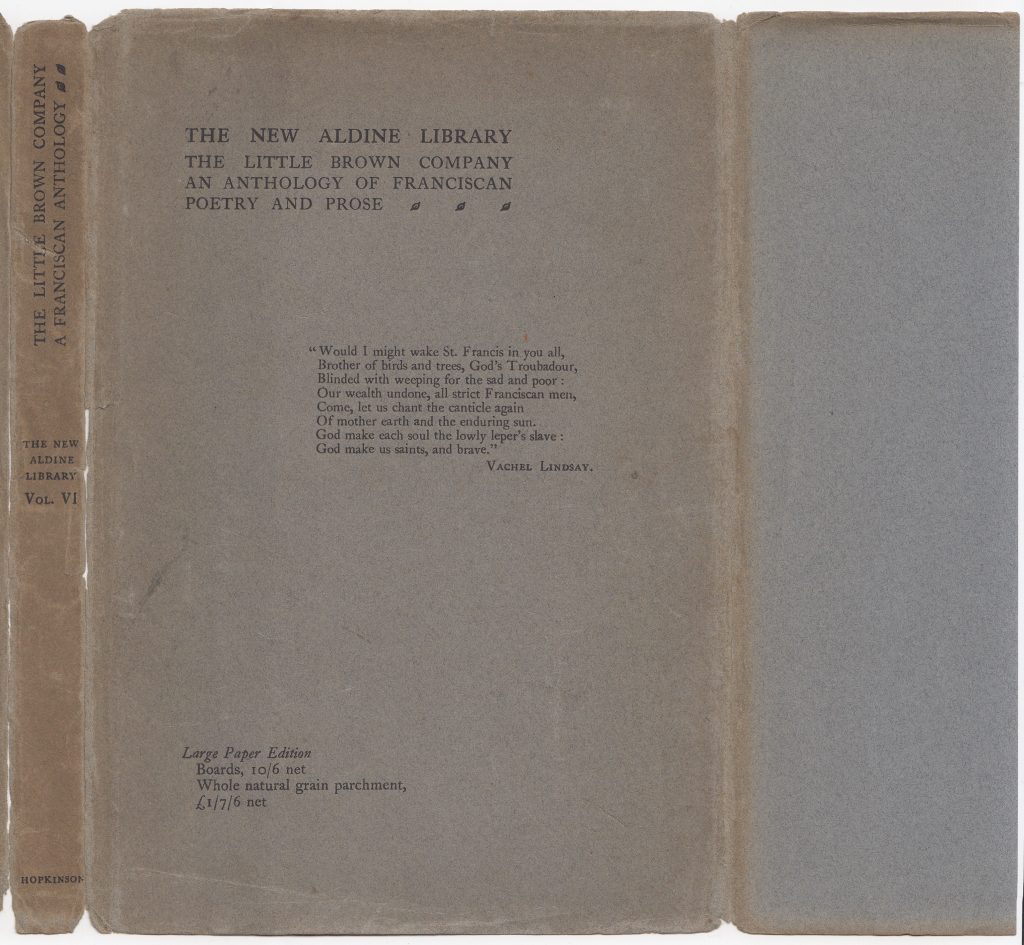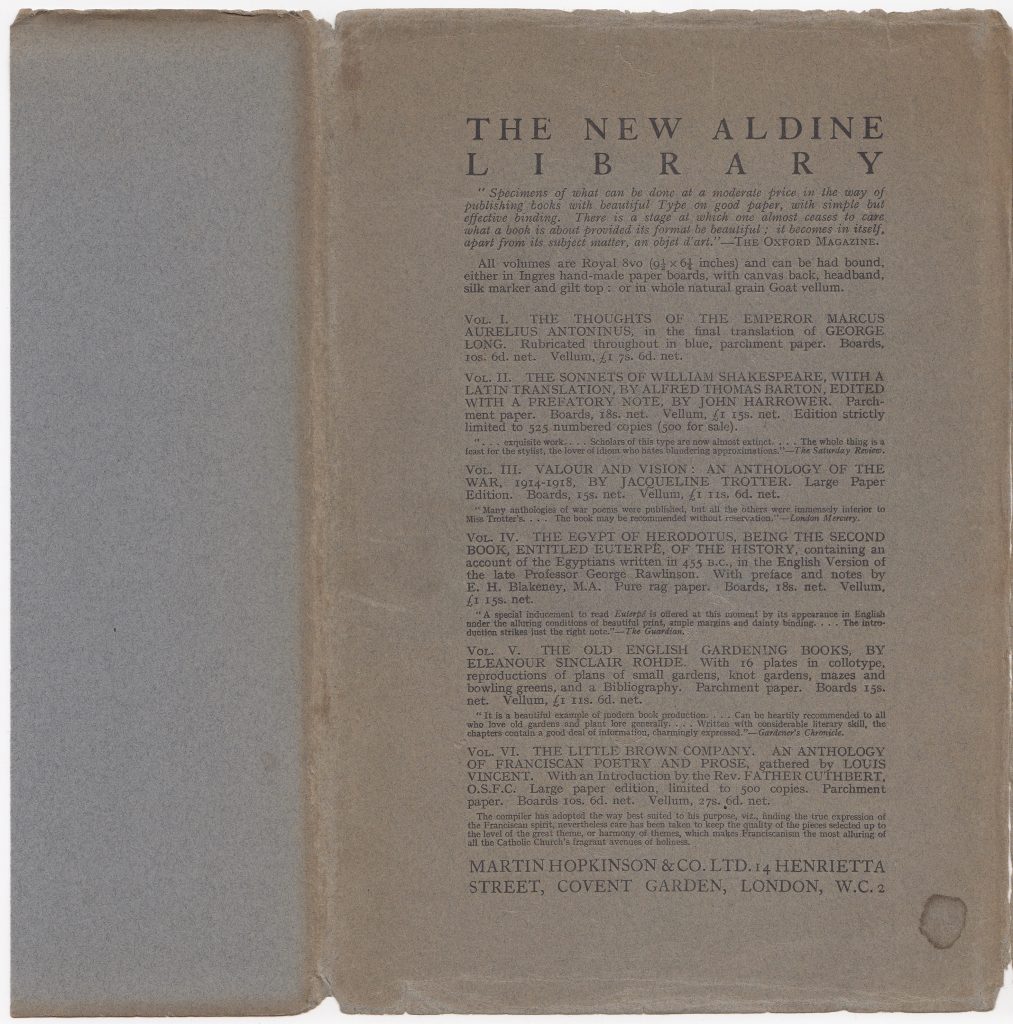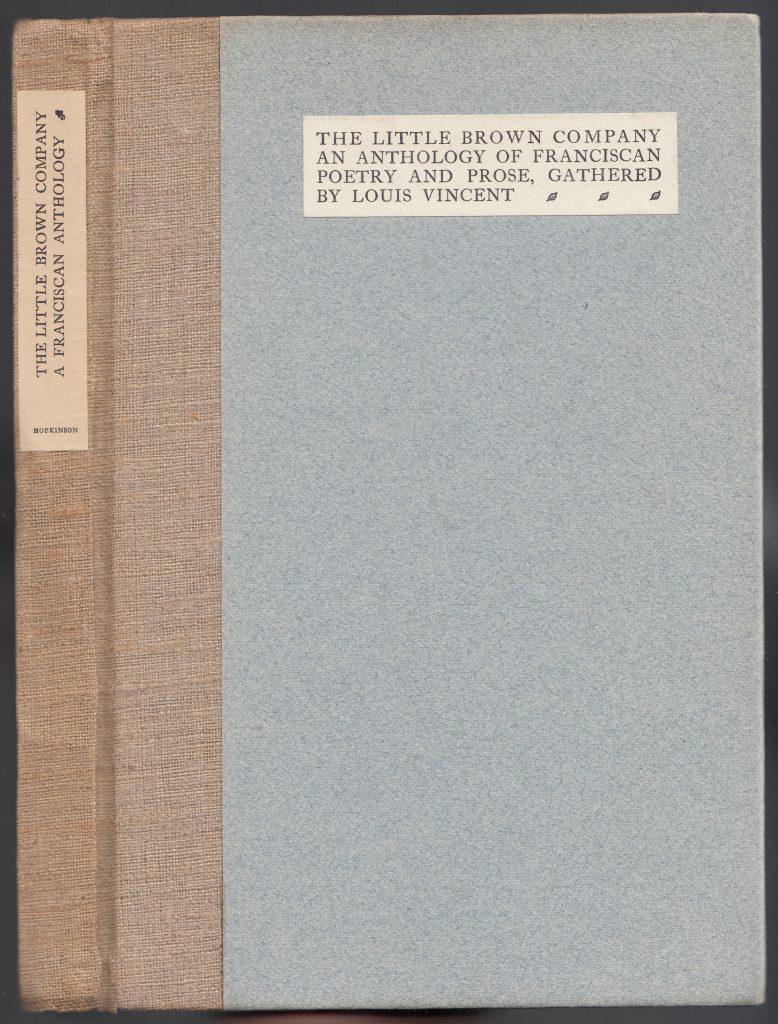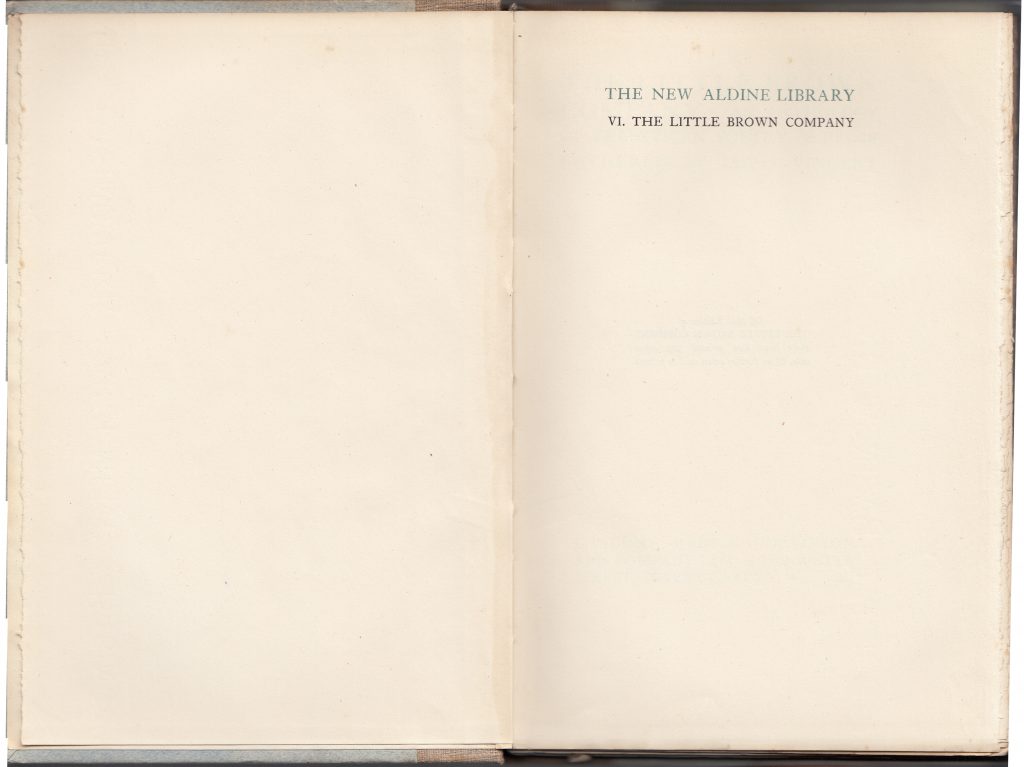Martin Hopkinson & Co., Ltd. (London, UK)
Series dates: 1923-1925
Size: 6.5″ x 9.6″
The Bookseller and the Stationery Trades’ Journal (1923, p. 115) announced the establishment of Martin Hopkinson & Co., Ltd., incorporated on…
“December 30th. £10,050 (£1 and 6d.). Publishers, book and print sellers, art journalists, literature agents, stationers, etc. First directors: M. Hopkinson, G. S. Williams and P. H. Lee Warner. 6, John Street, Adelphi, W.C.2.”
While the firm was, thus, potentially involved in book, print and stationery sales I have seen nothing but advertisements for books published by the firm. I have also found very little about the company in general, or Martin Hopkinson (not even an obituary). Martin Hopkinson & Co. was one of a number of British publishers focused on fine, but not necessarily expensive, limited edition book publishing in the first half of the 20th century, including Nonesuch Press, Alexander Moring (De La More Press), and the Scholartis Press.
Advertisements for Martin Hopkinson & Co. books appear frequently in the 1923-1930 era, but drop off through the 1930s. The last advertisements and reviews are in 1937-1939, suggesting the firm was nearing its end. A few reprints show up in the 1950s through the 1970s, suggesting that the company, although not actively publishing, was occasionally issuing reprints.

The New Aldine Library was among the initial offerings by the newly incorporated Martin Hopkinson & Co., Ltd. in 1923.
An advertisement, published in October of 1923, lays out a brief prospectus for the series, with the series name harking back to the pioneering Aldine Series, a reprint series from the previous century. The New Aldine Library would be, as with the Aldine Series, printed by the Chiswick Press, thus there was a tangible link to the earlier series. The initial three titles, claims the publisher, “indicate the wide catholicity which will be exercised in the choice of further volumes for the Library.”
Jackets for the series are plain, textual, and common to the series. The series name is prominent on the spine (where the series number is included) and front of the book jacket. The jackets are an example of stylish but utilitarian jacket design with details about the book (series and format) included on the jacket. This title, The Little Brown Company: An Anthology of Franciscan Poetry and Prose, edited by Louis Vincent, is #6 in the series and was issued in 1925 (as the last title in the series). Details about the particular book are included on the bottom front of the jacket (suggesting the quality, limited edition character of the book was a key advertising focus):
Large Paper Edition
Boards, 10/6 net
Whole natural grain parchment,
£1/7/6 net
The front jacket flap is blank.
I was initially confused (and am still slightly confused) by the title of the anthology. Initially, I was wondering what the publisher Little, Brown & Co. had to do with Franciscan literature. But the title is, instead, a description of what would become the Franciscan order (based on, I’m assuming, their brown robes). Alas, I see little evidence that this phrase was used much besides for this anthology, and seems to be largely a creation of the editor.
In total, six titles were issued in the series from 1923 to 1925. All were edited collections:
#1. The Thoughts of the Emperor Marcus Aurelius Antonius, George Long, translator. (1923)
#2. The Sonnets of William Shakespeare, with a Latin Translation, by Alfred Thomas Barton. John Harrower, ed. (1923)
#3. Valour and Vision: An Anthology of the War, 1914-1918, Jacqueline Trotter, ed. (1923)
#4. The Egypt of Herodotus, Being the Second Book, Entitled Euterpe, of the History, George Rawlinson, translator, E.H. Blakeney, ed. (1924)
#5. The Old English Gardening Books, Eleanour Sinclair Rohde, ed. (1924)
#6. The Little Brown Company. An Anthology of Franciscan Poetry and Prose, Louis Vincent, ed. (1925)
All six are included on the rear of the jacket for this title. Each includes details about the limited edition book itself, along with prices. The rear jacket flap is blank.
The books are quarter bound in boards and coarse cloth with glued on spine and front cover labels including the title, editor, and, on the spine, publisher.
The two-color (blue and black) half-title page includes the series name and book title (and series name).
A limited edition indicator (500 copies) faces the two-color (again, blue and black) title page. The year of publication, 1925, is included with the publisher’s imprint.
There is no copyright indication, but the printer is included on the back of the title page: Robert Maclehose & Co., Ltd., The University Press, Glasgow. This contradicts the claim in the advertisement, above, that the books were to be printed by the Chiswick Press.






